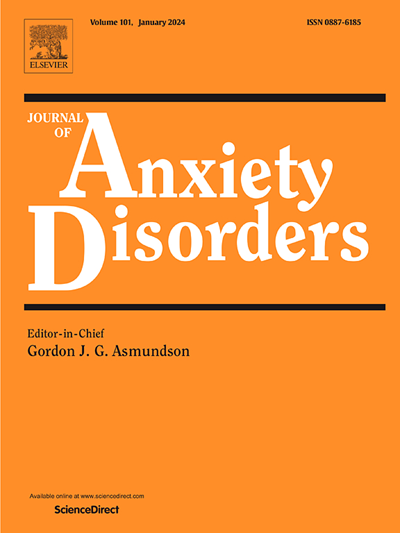ICD-11复杂创伤后应激障碍的记忆和身份过程:新理论的检验
IF 4.5
2区 医学
Q1 PSYCHIATRY
引用次数: 0
摘要
本研究对ICD-11复杂创伤后应激障碍(CPTSD)的记忆和身份(M&;I)理论提出的几个预测进行了实证检验。具体来说,它检查了两种测量方法的心理测量特性——创伤记忆经历问卷(ETMQ)和创伤身份问卷(TIQ)——并测试了不同类型的创伤暴露、记忆和身份障碍以及CPTSD症状之间的关系。方法数据收集自英国普通成人人群的非概率代表性样本(N = 975),并使用潜在变量模型检验所有假设。结果验证性因子分析结果支持了ETMQ和TIQ作为创伤记忆和消极身份的心理测量特性。多重创伤和人际创伤与创伤记忆和消极身份的干扰有关。在九个模型预测的创伤记忆、消极身份和CPTSD症状之间的关联中,有七个被观察到,包括支离破碎的自我意识和情感麻木之间的联系。结论创伤记忆和身份障碍是CPTSD的主要机制,支持了创伤记忆和身份障碍理论的核心要素。本文章由计算机程序翻译,如有差异,请以英文原文为准。
Memory and identity processes in ICD-11 complex posttraumatic stress disorder: Tests of a new theory
Background
This study empirically tested several predictions arising from the Memory and Identity (M&I) Theory of ICD-11 Complex PTSD (CPTSD). Specifically, it examined the psychometric properties of two measures—the Experiences of Traumatic Memories Questionnaire (ETMQ) and the Trauma Identity Questionnaire (TIQ)—and tested relationships between different types of trauma exposure, disturbances in memory and identity, and CPTSD symptoms.
Methods
Data were collected from a non-probability based representative sample of the general adult population of the United Kingdom (N = 975), and latent variable modelling was used to test all hypotheses.
Results
Confirmatory factor analytic results provided support for the psychometric properties of the ETMQ and TIQ as measures of traumatic memories and negative identities. Multiple traumatization and interpersonal forms of trauma were associated with more disturbances in trauma memories and negative identities. Seven of the nine model-predicted associations between trauma memories, negative identities, and CPTSD symptoms were observed, including a link between a fragmented sense of self and emotional numbing.
Conclusions
Results support core elements of the M&I Theory, highlighting trauma memory and identity disturbances as key mechanisms in CPTSD.
求助全文
通过发布文献求助,成功后即可免费获取论文全文。
去求助
来源期刊

Journal of Anxiety Disorders
Multiple-
CiteScore
16.60
自引率
2.90%
发文量
95
期刊介绍:
The Journal of Anxiety Disorders is an interdisciplinary journal that publishes research papers on all aspects of anxiety disorders for individuals of all age groups, including children, adolescents, adults, and the elderly. Manuscripts that focus on disorders previously classified as anxiety disorders such as obsessive-compulsive disorder and posttraumatic stress disorder, as well as the new category of illness anxiety disorder, are also within the scope of the journal. The research areas of focus include traditional, behavioral, cognitive, and biological assessment; diagnosis and classification; psychosocial and psychopharmacological treatment; genetics; epidemiology; and prevention. The journal welcomes theoretical and review articles that significantly contribute to current knowledge in the field. It is abstracted and indexed in various databases such as Elsevier, BIOBASE, PubMed/Medline, PsycINFO, BIOSIS Citation Index, BRS Data, Current Contents - Social & Behavioral Sciences, Pascal Francis, Scopus, and Google Scholar.
 求助内容:
求助内容: 应助结果提醒方式:
应助结果提醒方式:


